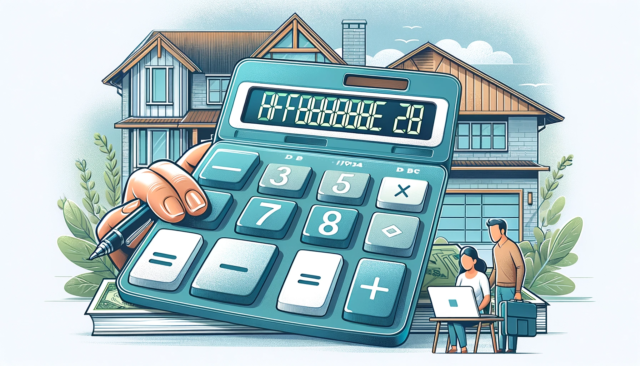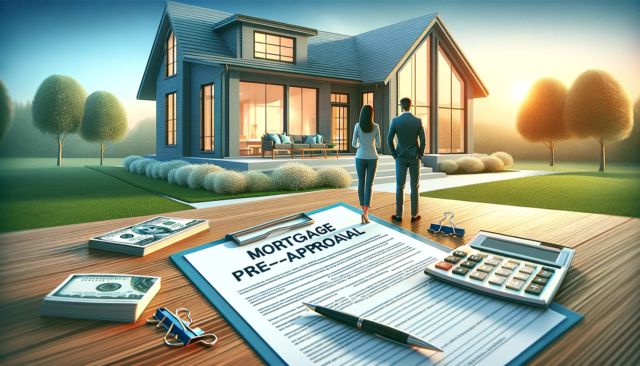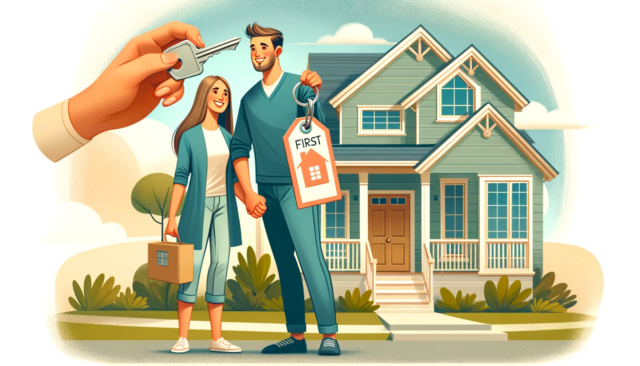Embarking on Your Homeownership Journey
Congratulations! You’re stepping into the exciting world of homeownership. As you transition from renting to owning, you’ll encounter several new concepts, especially in the realm of home financing. One critical element that comes into play is Private Mortgage Insurance (PMI). But before we delve into that, let’s first understand the basics of home financing.
Understanding Home Financing
Home financing is the process of borrowing money to purchase a property. This usually involves taking out a mortgage loan from a lender. The lender provides the funds for the home purchase, and you agree to repay the loan over a set period, typically 15 to 30 years, at a specified interest rate.
The amount you can borrow will depend on several factors including your credit score, income, debt-to-income ratio, and the value of the property you wish to purchase. To get a sense of how much you can afford, check out our home affordability calculators.
Most mortgage loans require a down payment, typically ranging from 3.5% to 20% of the home’s purchase price. However, don’t be discouraged if you don’t have a large sum saved up. There are various down payment assistance programs that can help you secure your dream home.
The Importance of Private Mortgage Insurance (PMI)
Now, where does Private Mortgage Insurance (PMI) fit in your homeownership journey? If you’re unable to make a 20% down payment, lenders usually require you to purchase PMI. This insurance protects the lender if you end up defaulting on your mortgage loan.
While PMI does add to your monthly mortgage payment, it also opens up opportunities for homeownership sooner than you might otherwise afford. Without PMI, lenders may require a higher down payment, which could be a significant hurdle for many first-time homebuyers.
In essence, PMI is a tool that helps you get one step closer to owning your dream home. As your understanding of home financing grows, you’ll discover more about PMI, including how it works, how it affects your mortgage payment, and how you can eventually remove it.
Remember, the road to homeownership may seem complex, but with the right knowledge and resources, you’ll navigate through it with confidence. Stay tuned as we dive deeper into the world of Private Mortgage Insurance (PMI) in the sections to come.
Exploring PMI
When it comes to buying a home, understanding your financing options is key. One such option that often confuses first-time homebuyers is Private Mortgage Insurance (PMI). So, what is PMI, and how does it work?
What is PMI?
Private Mortgage Insurance, or PMI, is a type of insurance that lenders require from homebuyers who make a down payment that is less than 20% of the home’s purchase price. It’s designed to protect the lender in case you default on your loan.
PMI might seem like an extra cost, but it actually plays a key role in your home-buying journey. It allows lenders to offer loans to buyers who may not have a large enough down payment saved up, making homeownership more accessible to a broader audience.
How Does PMI Work?
PMI is typically added to your monthly mortgage payment. The cost of PMI varies based on your loan-to-value ratio (LTV), which is the percentage of your home’s value that you owe on your mortgage and your credit score. The better your credit score, the lower your PMI payments typically are.
Here’s a rough estimate of how much you might pay for PMI depending on your credit score:
| Credit Score | PMI Rate (%) | PMI Cost on a $200,000 Loan |
|---|---|---|
| 760-850 | 0.55 | $1,100/year |
| 700-759 | 0.73 | $1,460/year |
| 680-699 | 0.82 | $1,640/year |
| 660-679 | 1.06 | $2,120/year |
| 640-659 | 1.41 | $2,820/year |
| 620-639 | 2.37 | $4,740/year |
Keep in mind that these are just estimates, and the actual cost will depend on various factors.
Once the LTV ratio of your mortgage reaches 80%, meaning you’ve paid off 20% of your home’s value, you can request to have PMI removed from your mortgage payments. However, this process can vary from lender to lender, so it’s crucial to discuss this with your mortgage provider to understand their specific requirements.
While PMI might seem like an additional expense, it can be a valuable tool in your toolkit when it comes to home loan financing. By understanding how PMI works, you can make more informed decisions on your path to homeownership.
Advantages of PMI
You might be wondering why you would want to add an extra cost like Private Mortgage Insurance (PMI) to your home-buying process. But, did you know PMI can actually be a significant advantage on your path to homeownership? Let’s take a look at how PMI can benefit you.
Gateway to Homeownership
PMI can serve as your gateway to homeownership, especially if saving for a 20% down payment seems like a daunting task. By opting for PMI, you can become a homeowner sooner than you might have thought possible. You no longer need to wait until you’ve saved a hefty down payment. Instead, you can dive into the market when you’re ready and when it’s the right time for you. For more on the financial aspects of buying a home, check out our guide on home loan financing.
Lower Down Payment
One of the main benefits of PMI is the ability to put down a lower initial payment. Traditional mortgages often require a 20% down payment. However, with PMI, you could potentially put down as little as 3% to 5%. This drastically reduces the upfront cost of purchasing a home and makes homeownership a more attainable goal for many first-time buyers.
| Traditional Mortgage | Mortgage with PMI |
|---|---|
| 20% down payment | 3% to 5% down payment |
For more help understanding how much house you can afford, take a look at our home affordability calculators.
Improved Loan Terms
Having PMI can sometimes help you negotiate better terms for your loan. Since the lender has the added security of the PMI, they may be more willing to offer favorable terms, such as a lower interest rate or a higher loan amount. This can make your mortgage more affordable in the long run and can help you purchase a home that fits your needs and preferences.
In addition to PMI, there are other ways you can receive financial assistance when purchasing a home. Be sure to explore down payment assistance programs and homebuyer tax credits as well.
In conclusion, while PMI does add an extra cost to your mortgage, the benefits it brings—like acting as a gateway to homeownership, allowing for a smaller down payment, and potentially improving loan terms—can make it a worthwhile investment on your path to owning your dream home. As you navigate your home buying journey, remember to explore all your options and make use of resources like the mortgage pre-approval process to ensure that you’re making the best decisions for your financial future.
PMI and Your Mortgage Payment
Having a clear understanding of how Private Mortgage Insurance (PMI) impacts your mortgage payment is essential when planning your home financing strategy.
PMI in Your Monthly Mortgage Payment
When you take out a conventional loan and put down less than 20% of the home’s purchase price, the lender requires you to pay for PMI. This insurance policy protects the lender in case you default on your mortgage payments.
So, how does PMI affect your monthly mortgage payment? Essentially, the cost of PMI is added to your monthly mortgage payment. The amount you pay for PMI varies depending on your loan amount and your PMI rate. Typically, PMI can range from 0.5% to 1% of the total loan amount annually.
Here is a simplified example:
| Loan Amount | PMI Rate | Annual PMI | Monthly PMI |
|---|---|---|---|
| $200,000 | 0.5% | $1,000 | $83.33 |
In this example, with a loan amount of $200,000 and a PMI rate of 0.5%, you would end up paying an additional $83.33 per month for PMI. While this may seem like an extra burden, PMI offers you the ability to purchase a home sooner because you don’t have to save up for a large down payment. Plus, our home affordability calculators can help you figure out how much home you can afford, including your monthly PMI payment.
PMI Removal: When and How?
Now, you might be wondering, “Do I have to pay PMI for the entire life of my loan?” The good news is, no, you don’t! PMI is automatically terminated when your mortgage balance reaches 78% of the original value of your home. Alternatively, you can request to have PMI removed once your mortgage balance is 80% of your home’s original value.
Also, keep in mind that if your home’s value appreciates over time, this can contribute to reaching that 80% threshold sooner. When you believe you’ve reached this point, contact your lender to initiate the PMI removal process.
Understanding PMI and your mortgage payment helps you make informed decisions on your journey to homeownership. Remember, PMI isn’t a life-long expense; it’s a tool that can help you become a homeowner sooner. For more information on financing your home, check out our guide on home loan financing.
Frequently Asked Questions About PMI
In the journey of home ownership, you might have several questions about Private Mortgage Insurance (PMI). It can seem like a complicated concept, but understanding it can be pivotal to your home-buying process. Let’s address some of the common queries about PMI.
Why Do I Need PMI?
Private Mortgage Insurance (PMI) is usually required by your lender when you make a down payment of less than 20% on your home. It serves as a security measure for the lender in case you default on your mortgage payments. The higher risk associated with a lower down payment is offset by the insurance that PMI provides.
PMI might seem like an additional cost, but it enables you to buy a home without waiting until you’ve saved a 20% down payment. This can make home ownership attainable sooner. It’s important to consider the costs and benefits involved and make sure to use home affordability calculators to understand what you can comfortably afford.
How Much Does PMI Cost?
The cost of PMI varies based on the size of your down payment and your credit score. Generally, it ranges from 0.5% to 1% of the entire loan amount every year. So, if your loan is $200,000 and your PMI rate is 1%, you would be paying around $2,000 a year, or approximately $166.67 a month.
| Loan Amount | PMI Rate | Annual PMI | Monthly PMI |
|---|---|---|---|
| $200,000 | 1% | $2,000 | $166.67 |
Keep in mind that PMI is only a temporary cost. Once you’ve built enough equity in your home (typically when your loan-to-value ratio reaches 80%), you can request to have the PMI removed.
Are There Different Types of PMI?
Yes, there are different types of PMI, and the type you choose can affect how much you pay overall and how you pay it. The types include:
- Borrower-Paid PMI: The most common type is that you pay the PMI as part of your monthly mortgage payment.
- Lender-Paid PMI: The lender pays the PMI but usually charges a higher interest rate.
- Single-Premium PMI: You pay the entire PMI upfront as a lump sum.
Your lender can help you determine which type of PMI is best for you based on your financial situation and your home-buying plans.
Remember, PMI is just one aspect of home loan financing. There are many other factors to consider, including interest rates, loan terms, and additional fees. It’s always a good idea to explore all your options and take advantage of resources like down payment assistance programs and homebuyer tax credits. Also, familiarize yourself with the mortgage pre-approval process to make your home-buying journey smoother.



